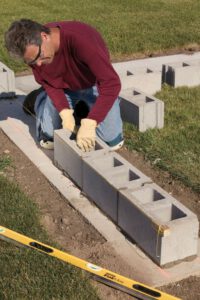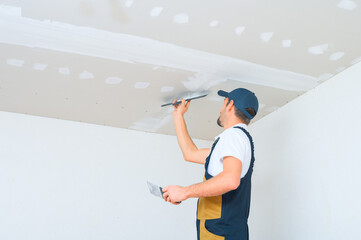 Used cars can be a great way to save money and dream a little bigger. Many organized online used car platforms also offer quality certification and transparency options. In addition, private sellers will often reveal a lot about the history of their vehicle.
Used cars can be a great way to save money and dream a little bigger. Many organized online used car platforms also offer quality certification and transparency options. In addition, private sellers will often reveal a lot about the history of their vehicle.
Various websites and printed pricing guides provide value estimates for vehicles based on their condition, mileage, and features. Using these estimates will help you negotiate effectively.
Buying new cars can be a tempting option, but there are some real benefits to purchasing used vehicles. In the long run, a person can save money on automobile insurance, registration fees, depreciation, and, if financing is involved, debt accumulation from vehicle loans. These savings can be used to reduce debt, fund retirement, or even purchase assets that appreciate over time.
One of the biggest reasons to buy a used car is because of its lower price tag. The average used car costs about $30,000 less than a new one. This savings can add up over the years, especially if a person owns 13 cars in his or her lifetime. The first step in buying a used car is to make sure that it is reliable and safe. This can be done by checking the vehicle history report and service records. In addition, it is a good idea to bring along a mechanic to inspect the car.
Another advantage of a used car is its reliability. Cars that are a few years old have been extensively tested by drivers. The results have shown that many used cars can drive as reliably as new ones. This is especially true if you choose a model that was well-tested by Consumer Reports.
A used car also gives you more options when it comes to features and models. For example, if you want an advanced stereo system or a panoramic sunroof, it may be difficult to find these features on a newer model. However, these options are commonly available in used cars.
It is also worth considering that buying a used car can be environmentally friendly. The production of a new car generates significant amounts of carbon dioxide, while older cars are more fuel efficient and cause less pollution. This means that by choosing a used vehicle, you can help the environment and save money.
There are some additional expenses that come with a used vehicle, including sales tax and licensing fees. The amount of these additional expenses varies by state, so it is best to check with your local DMV before you make a purchase. However, these fees are typically less expensive than the registration and title fees that come with a new vehicle.
Transparency
The car market is huge, and it’s easy to get lost in it. The best way to make sense of the inventory is to look for a trusted used-car marketplace that provides certified used cars and transparent pricing. These platforms will allow you to ask multiple questions without hesitation about the car’s usage, reason for sale, age, and so on. Moreover, they will help you find the best car that fits your budget.
Buying a car isn’t an impulsive decision for most people, and it requires a lot of planning and big savings. Despite this, there is no doubt that it’s an important investment for most buyers. Many people also tend to wonder if it’s better to buy a used or new car. Buying a used car is a great option for people who want to save money on the initial purchase and lower maintenance costs. It is also a good idea for people who are looking for more features but are not willing to pay the high price of a new car.
A car’s value depreciates over time, and this happens more rapidly when it is new. The depreciation rate for a used car is significantly lower, so it can be more cost-effective than a new car. In addition, it can be easier to sell a used car than a new one.
One of the most popular ways to reduce a car’s initial price is to buy it from a dealer. This can save you a lot of money, and you can also take advantage of the dealer’s financing options. Another great benefit of purchasing a used car is that the registration fees are often less expensive than for new cars.
The word “transparency” is derived from the Latin verb transparere, which means to show through or be visible. It is also the root of the words apparent and evident. Transparency can be a positive or negative quality, depending on how it is used. For example, some companies have a policy of transparency in order to increase customer satisfaction, while others use it as a marketing tool to attract consumers.
Reliability
Reliability is a big concern for many car shoppers, especially when they’re shopping on a tight budget. The good news is that a used car doesn’t have to be a clunker, even in this economy. The key is to choose a model that has a great reliability rating and has been well maintained by its previous owners. It’s also a good idea to take the vehicle for a pre-purchase inspection by an independent mechanic to identify any hidden problems.
For buyers looking for a reliable car that can handle everyday use, a midsize sedan is a good choice. It can accommodate a growing family without breaking the bank. The Honda Accord has been around for decades and offers plenty of storage space, a strong engine, and great fuel economy. It’s no wonder that this model ranks high in J.D. Power’s reliability surveys
The Kia Forte is another option for a reliable and affordable midsize sedan. This model has been on the market for a while and is available with both manual and automatic transmissions. It also has a four-cylinder engine and plenty of amenities for a reasonable price.
Another good option is the Ford Mustang, which has a fun driving experience and a J.D. power reliability score of 88 out of 100. Its dependable engine and fuel economy make it a popular choice for drivers who want a little excitement in their lives.
Finally, the Acura TLX is an excellent, luxury-feeling vehicle that’s not as expensive as its competitors. Its four-cylinder or V6 engine and smooth eight- or nine-speed automatic transmission provide plenty of driving enjoyment. Its reliability rating is above average, so you can count on it to last for years.
In addition to checking a used car’s history, buyers should always look for any open recalls before buying it. This is an important step because over 83.2 million vehicles on the road have open safety recalls, according to a report by Consumer Reports. This means that if you buy a car with a known defect, you could be subjected to costly repairs in the future.
Flexibility
While many car buyers crave that new-car smell, a lot of people are willing to give up the thrills of a brand-new vehicle in order to save money and get an incredible amount of flexibility in return. This is a big reason why used cars are gaining popularity. In fact, three out of four survey respondents say they will be buying a used car rather than a new one.
Another benefit of a used car is the ability to negotiate with a private seller or dealership. Unlike new vehicles, which typically have a price tag that isn’t the same as the actual purchase amount, most used cars will come with an upfront price that isn’t padded by “documentation fees,” reconditioning charges, or advertising fees. This means that you can negotiate the price of a used car and save money in the process.
Purchasing a new car is also a huge leap of faith in terms of the vehicle’s reliability and durability. It is difficult to know how reliable a new vehicle will be, but reputed dealerships inspect their used cars and provide warranties for them. Moreover, the reliability of a car has improved significantly over the years, and most makes and models can easily reach or even exceed 200,000 km without major issues.
There is a wide variety of options in the used car market, so it’s easy to find a vehicle that fits your needs and budget. Whether you want to buy an SUV, luxury vehicle, or minivan, there is sure to be something out there that will suit your needs. In addition, the depreciation factor on a used vehicle is much less severe than that of a new one, which means that you’ll be able to get more features in a smaller price range.
With inventories of both new and used cars well below optimal levels, the time to consider a used vehicle is now. You can shop online, where you’ll be able to find vehicles from dealer lots and from private sellers. Alternatively, you can visit traditional dealerships to see the inventory of vehicles in person and talk with salespeople about your wants and needs.




